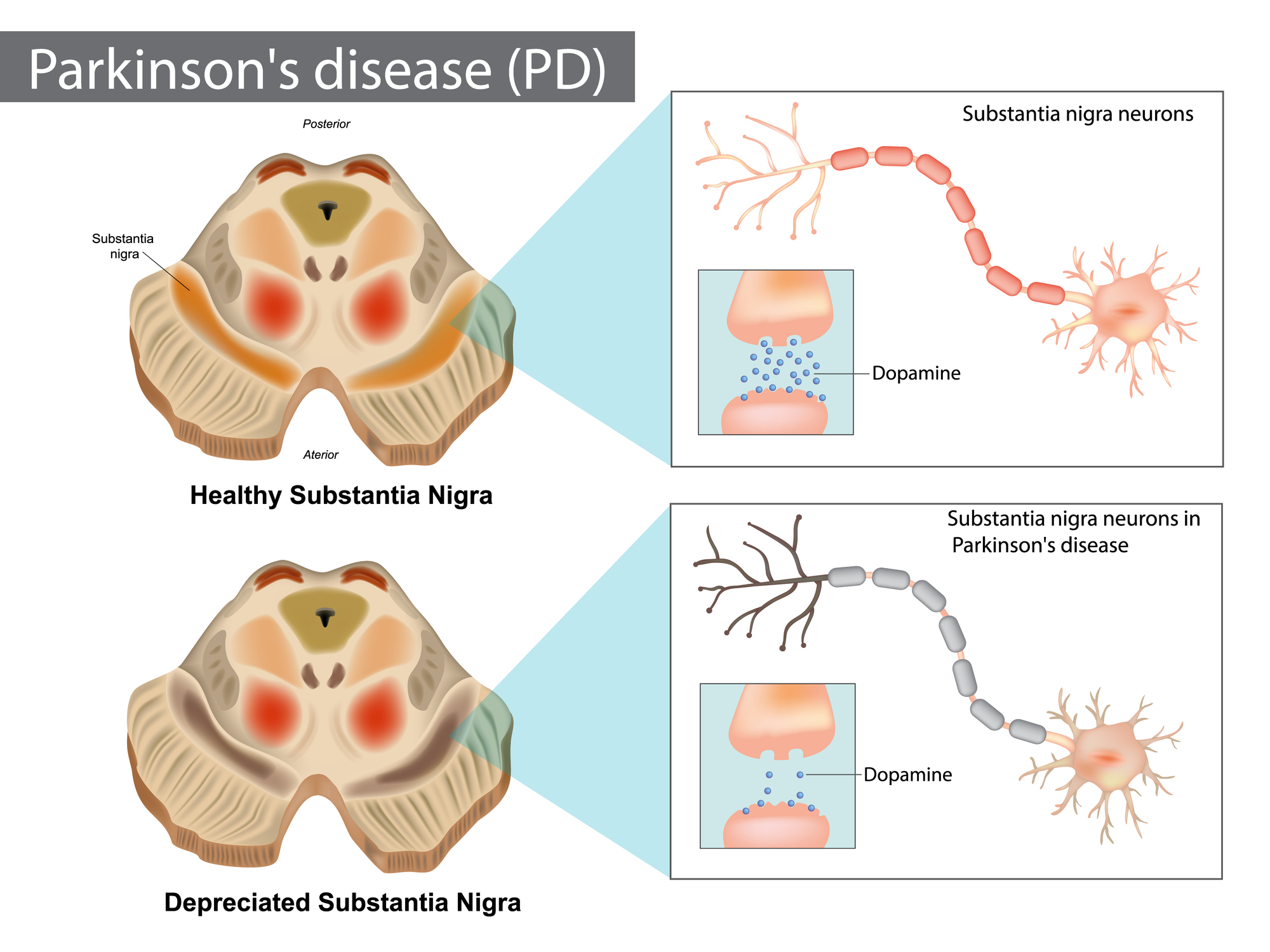How does music help people with Parkinson's disease?
Grade 8
Presentation
No video provided
Problem
Parkinson's disease also know as PD is a neurodegenerative disorder which paralysis parts of the patients body or completely paralysis their body.This disorder is caused by reduction in Dopamine levels in the brain. This disorder is usually found in people who are above 60 years old but, it can also be diagnosed for youngsters who are only 30 to 40 years old and this type of PD is known as Young onset Parkinson's disease YOPD in short. Scientists have been trying to find a cure for PD for about 200 years but unfortunately they have not found any medicine to completely cure PD.
Method
According to multiple experiments and research papers music can be extremely benificial and can significantly reduce the effects of Parkinson's disease. This can work only if the correct treatment is administered and the treatment is persistent.
Research
What happens behind Parkinson's disease?
We know that one of the causes of PD is reduced dopamine levels but why does it increase the risk of Parkinson's disease? Dopamine is produced in the neurons located substantia nigra which is located in the basal ganglia.

The gap between one synapes and another is called the synaptic cleft. The presynaptic neuron contains the vesicles which has the neurotransmitter in this case dopamine. When there is a nerve impluse for happiness, the presynaptic neuron releases dopamine to the postsynaptic neuron which has the neurotransmitter receptors and this holds on to the dopamine. This process happens in the Substantia nigra.

This image compares the Substantia Nigra of a healthy person and a person with Parkinson's disease. The less dopamine signals in the brain the less electrical impluses caused. Due to this reduction, motor and cognitive skills significantly reduces. Dopamine is not the only neurotransmitter affected in PD, Seretonin and GABA (Gamma Aminobutyric Acid) are also affected.
Parkinson's and Dementia.
Parkinson"s disease and Dementia together is called Parkinson's disease dementia (PD-D). Parkinsons' disease can cause Lewy body dementia when cognitive declines before motor or cognitive and motor decline almost at the same rate. Lewy body dementia is caused by protein deposits called Lewy bodies. This protein affects the regions of the brain involved in thinking, memory and movement.
Symptoms of PD-D.
Memory changes and decrease in attention.
People with PD-D experience disoreintation, confusion and short or long term memory impairment.
Mood changes, hallucinations and paranoia.
Seeing and hearing things that do not exist. Peculiar or unrealistic beliefs which include paranoid thinking, suspicion and distrust.
Visual perception difficulties.
PD-D can sometimes cause subtle vision issues. These issues can be misperceptions or illusions. These complications can include difficulty in finding an object in a clutered or a crowded area or navigating familiar or unfamilliar places.
Language challanges.
People with PD-D might encounter communication difficulties such as difficulty in naming objects or misnaming some objects as well.
How does music help people with Parkinson's Disease?
Emotional benefits
Listening to music stimulates multiple parts of our brain such as hearing, awareness, rhythm, harmony, emotions and physical movement. Music has an effect on perception and movement. With music people can focus on enjoying and bringing positivity instead of concentrating on their mobility problems.
Movements benefits
Music not only helps PWPs (People with Parkinson's) mental health it also helps improve their gait speed. In the 1990s a series of reseach studies demonstrate that auditory rhythms prime the motor system by providing anticipated time cues. This allows planning and presentation for the patient walking timing and pace for PWPs.
Types of musical therapy for PD
There are different types of musical therapy for Parkinson's disease. Listed below are the most common types.
- Rythmic Auditory Stimulation (RAS)
Rythmic auditory stimulation is used to improve gait interference caused by PD. RAS is used for gait training in the form of a metronome click with subtle intrumental music usually in the time signature 2/4 or 4/4 which is 2 beats per measure and 4 beats per measure. The tempo is altered for the patient so they are guided by these sound cues and the tempo is gradually increased according to the patients improvent. An article from the National library of Medicine has mentioned that the 18 studies they performed on PD patients with RAS therapy had significantly increased their stride length and reduced the frequent freezing which are common in PD patients.
- Other musical therapies
Dancing
Dancing can benifit PWPs as the rhythm in dance can help movement easier and more fluid. In fact less movement for PWPs make the symptoms of PD worse so, dancing induces a fun and motivational method of movement therapy. We know dancing helps but how?
- It strengthens mobility.
Since PD impacts movement dance has proven to improve speed, reduce gait interference and increases stride length.
Outlet for physical exercise.
PD impacts the persons physical strength so, repeated dance movement improves muscle memory and these moves can be used daily in tasks which require movement.
- Sound stimulation
New rhythms and music help keep clasess engaging and bring in some challenging dance moves which help PWPs movement.
- Improving mental health
Dance and music have been proven to improve the mental health of PWPs. If a person is struggling with their diagnoses dance can help them take their mind off it and channel their energy in a good way.
Vocal and singing
While singing, facial muscles, vocal apparatus and respiratory system is functioning to make sounds. Constant singing practise can improve communications in PWPs. Singing songs are also fun and engaging and it is much better than medications (Levadopa) and DBS (Deep Brain surgery). According to the National Library of Medicine, multiple studies report positive effects of singing on speech in PWPs for example increased loudness and better pronounciation.
Real example from the book I heard there was a secret chord by Daniel J Levitin
Dr Levitin is a neuroscientist, a musician and best selling author. He is a professor at the Mc Gill university and a visiting professor at UCLA. The example I will be talking about is referring Dr Levitin and the singer Bobby McFerrin. Bobby was diagnosed with PD when he was 66 years old. He did not know he had PD at the start and he was feeling tired and being in a sour mood more often. It is mentioned in this book about an experience with music and PD. One afternoon in a hotel in Vermont before a performance he was feelling tired and sick. He was planning on cancelling rhe show but still went on for his fans. He planned on staying there for only 45 minutes and returning back to the hotel but when he got on stage and started to sing he mentioned he was filled with energy and performed for the entire duration of the show. He was feeling 80% better when performing and the effect was still there for a days. Not long after this incident he had trouble speeking and then he was diagnosed with Parkinson's disease.
Challenges of music in Parkinson's disease
Even though music benefits PWPs there are some challenges as well. Music therapy can trigger unwanted or unpleasent memories which can lead to emotional break downs, anxiety or trauma from the past. The National Institute on Deafness and Other Communication Disorders state constant or continous sound above 85 decibels can cause hearing impairment. Music therapy needs to be carefully designed depending on the paitient otherwise it may not work. If the therapies are too fast for the PWP to catch up it is highly possible it would not work.
Data

This chart from Research gate shows the syncopation of 3 participants with PD and their musical therapists without PD. The X axis states the number of sessions and the Y axis states the density of syncopation. A higher density of syncopation is when the beat or the rhythm is not predictable and uses a lot of cognitive focus and a lower density of syncopation means a stable predictable beat which uses less cognitive focus. The baseline shows the data before the musical treatment. The guitar is played by the therapist and the drums is played by the PWP. The Participant 1 (P1) was able to play the easy beats with syncopation in the first session but significantly reduces from the second session onwards. P2 has a lower syncopation score before the treatment but played more complex rhytms throught the sessions.. P3 had a very high syncopation score but then this participant had significatly reduced after the treatment begun because they were unable to play more complex rhythms. In conclution P1 and P3 was able to play the easy beats with syncopation before the treatment and when the treatment began these two participants played it safe by playing easy beats and rhythms where as P2 took on a challange and played with more syncopation even after the beats got more complex. This experiment was done in a very small scale with only three people but people performing this experiment are planning to take it to a larger scale.

This second graph is also from the same experiment above. The x axis has the participants and the sessions they attended during this treatment. The y axis has their walking speed which is their gait velocity. The pre- baseline shows the speed before the treatment begun, the post- baseline shows the speed immediatly after the treatment begun, post- treatment shows after the entire treatment is over and follow- up should be after a few weeks since the exact timeline was not mentioned. All the participants showed a increased speed from pre- baseline to post- baseline. From post- baseline to post- treatment timeline P2 has the same speed from post- baseline and P3 shows a increase in speed but P1 shows a slight dip in gait velocity which might show the participant might have done well in only in some of the sessions in the duration of the entire treatment. Since P2 does not have a follow up result I will refer to P1 and P3. P1 has a very good result after the slight dip in their results. P3 has a minute improvement from post- treatment and follow up. In conclusion all the participants has shown a positive result to music therapy.
Conclusion
Music is a powerful tool to help reduce the proggression of Parkinson's disease. It works well when it is just the therapy and with Levadopa which is the medicine given to PWPs . It is great when it is administered after DBS ( deep brain surgery) as well. Even though it has some disadvantages it does help not only PWPs it also helps people with other neurological disorders.
Citations
- https://pmc.ncbi.nlm.nih.gov/
- https://pmc.ncbi.nlm.nih.gov/articles/PMC9366143/
- https://www.sciencedirect.com/
- https://www.frontiersin.org/journals/neurology/articles/10.3389/fneur.2015.00185/full
- https://blog.encompasshealth.com/
- https://www.geeksforgeeks.org/
- https://www.sciencedirect.com/
- https://www.parkinson.org/
- https://www.parkinsons.org.uk/
- https://pmc.ncbi.nlm.nih.gov/articles/PMC8801707/#
- https://www.michaeljfox.org/news/parkinsons-disease-dance-may-improve-symptoms-and-self-expression
- https://www.henryford.com/blog/2023/09/parkinsons-disease-patients-rediscover-freedom-of-movement-with-dance#
- https://www.researchgate.net/figure/Participants-drum-set-and-the-Music-Therapists-guitar-patterns-of-density-of_fig2_352899821
- https://pmc.ncbi.nlm.nih.gov/articles/PMC6395961
- https://www.sciencedirect.com/science/article/abs/pii/S0166432823004680#
- https://www.researchgate.net/figure/The-patterns-of-gait-velocity-scores-by-participant-across-conditions-P2s-data-for-the_fig3_352899821
- I heard there was a secret chord. Music as medicine by Daniel J Levitin.
Acknowledgement
I acknowledge and express my gratitude to these following people
- Ms Holmes
- Ms Mohanan
- Ms Antulov
- My mom
- My dad
I thank these people from the bottom of my heart for giving me this opportunity to participate in this year's science fair and helping me when I got stuck.
Thank you all very much.

